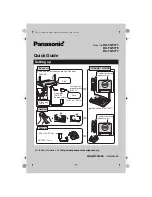
14
PLUNGE CUTTING
See Figures 11 - 12.
WARNING:
To avoid loss of control, broken blades,
or damage to the material being cut, always use
extreme caution when making plunge cuts. We do
not recommend plunge cutting on materials other
than wood.
TO MAKE A PLUNGE CUT
�
Mark the line of cut clearly on the workpiece.
�
Set the cutting angle at 0° and the orbital adjustment
knob to 0.
�
Tilt the saw forward so that it rests on the front edge
of the base and blade will not come in contact with the
workpiece when the saw is turned on.
�
Make sure the blade is inside the area to be cut.
�
Using high speed, start the saw and slowly lower the
blade into the workpiece until the blade cuts through
the wood.
�
Do not move the base forward until the blade cuts
entirely through the workpiece and the base is in
complete contact with the workpiece.
�
Move the saw forward to complete the opening.
�
Use only the 7 teeth per inch blade for this type of cut.
®
OPERATION
Fig. 9
Fig. 12
ANGLE CUTTING (BEVEL CUTTING)
See Figures 9 - 10.
Bevel cutting angles may be adjusted from 0° to 45° right
or left. Angles for cuts from 0° to 45° in 15° increments
are marked on a scale on both the left and right side of
the base. Notches on the rear of the base provide positive
stops at each of the above mentioned 15° increments.
A protractor is recommended when accurate cuts are
required.
�
Using the 1/8 in. hex key provided, loosen the base
pivot screws until the base can be moved.
�
Slide base forward until base pivot screws can move
freely in slots in base.
�
Align the mark, on the base, of the desired angle with
the edge of the motor housing.
�
Once the desired angle is reached, slide base back
until tab on motor housing aligns with the appropriate
notch on rear of base.
NOTE:
When making a set-up for accurate cuts with
a protractor, or for angles other than the preset 15°
increments, the positive stop notches on the rear of the
base are not used.
�
Tighten the base pivot screws securely.
�
Return hex key to storage compartment.
NOTE:
The wide slot in the base must be used when
making bevel cuts, scroll cuts, plunge cuts, and when
cutting metal.
Fig. 10
®
SAW BASE
15
0
30
45
SCALE
HEX KEY
SAW BASE
BASE
PIVOT SCREWS
PLUNGE CUT
Fig. 11
®




































